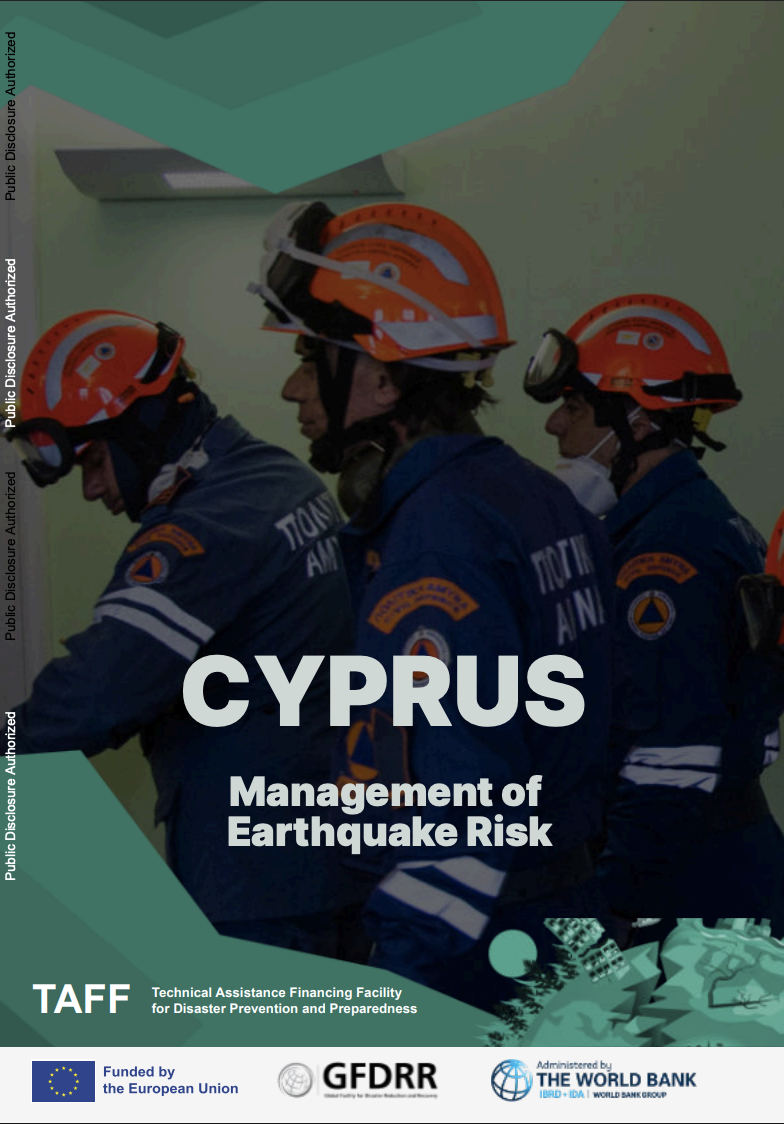The Republic of Cyprus (hereafter referred to as ‘Cyprus’) faces various natural hazards, including earthquakes. According to the National Risk Assessment (NRA) for the Republic of Cyprus, earthquakes pose the second greatest risk of high impact, following wildfires. Based on national and European-wide seismic hazard assessments, Cyprus is classified as a high-hazard seismic area, with the highest risk concentrated in the southern part of the island. Since it has been many decades since the last deadly large earthquake (the 1953 Mw 6.3 Paphos earthquake), public awareness of the earthquake risk and its consequences is relatively limited. Thus, risk reduction, prevention, and preparedness efforts are essential to mitigating the impacts of future earthquakes. This report summarizes the results of a rapid review of earthquake risk and management capacity in Cyprus, highlighting potential risk management actions and investment opportunities to inform policy dialogue and future research. The review considers capacity across multiple dimensions, including governance, understanding earthquake risk, risk reduction and mitigation, early warning and public awareness, preparedness and emergency response, recovery and post-disaster financing, and cross-cutting topics such as social resilience and the role of the private sector. Drawing on available information, each chapter reviews the general context, current arrangements, and key challenges and opportunities to enhance earthquake resilience in Cyprus.

